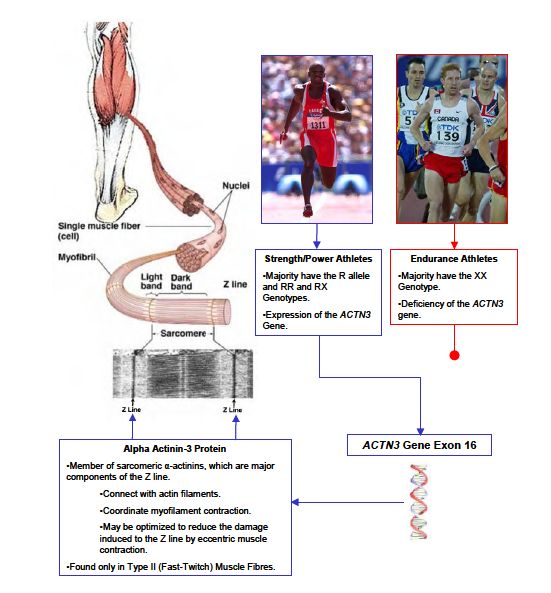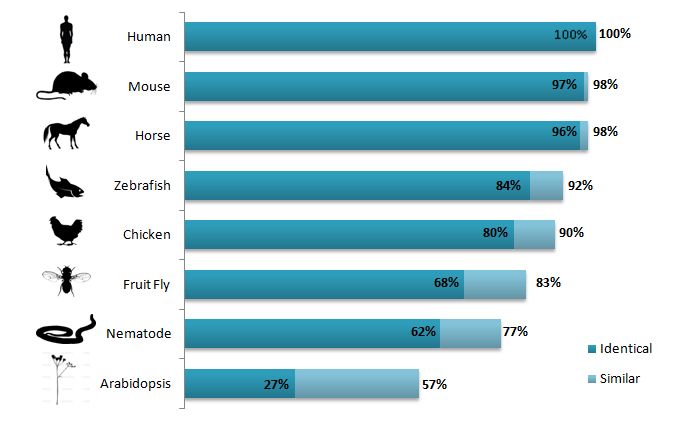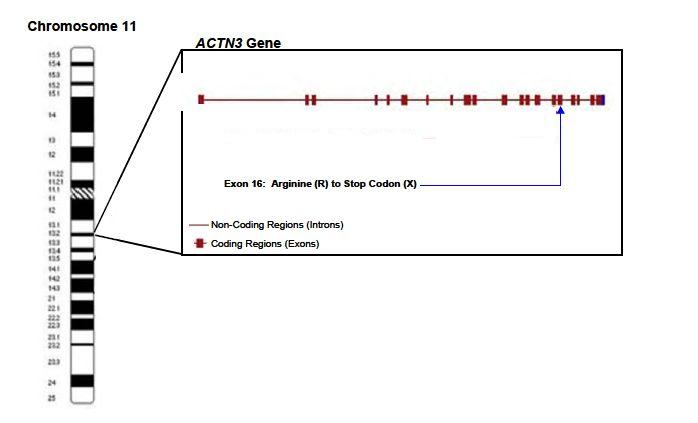ACTN3
- OMIM: 102574
- UniProt: Q08043
Alpha -actinin 3 ( ACTN3 ) is a protein found in vertebrates, which connects the structural protein actin and other structural proteins such taking part in the muscle contraction. Its expression is restricted to skeletal muscle. It is referred to in the Z-disk structure and the " dense bodies " ( dense bodies ) located where it helps to anchor the myofibrillar actin filaments.
A mutation in humans ( rs1815739; R577X ) was identified in the ACTN3 gene responsible for a significant percentage of the population to a shortened variant of the alpha -actinin 3. Worldwide, this variant exists in about 20% of the population. General African Americans have the lowest incidence of this mutation, while Asians have the highest. Scientists believe that variations in this gene developed to accommodate requirements of the energy consumption of the people in different parts of the world.
Studies show a link of fiber types for ACTN3, so individuals have a high percentage of fast twitch muscle fibers, the non-mutated version of the gene. Also, studies of elite athletes have shown that the ACTN3 gene can affect athletic performance. While the non-mutated version of the gene is associated with a sprint performance, the mutated version is associated with athletic endurance performance.
Function of ACTN3 in muscle fibers
Actin filaments are stabilized by actin -binding proteins, called Actinins. There are two main types: Type 2 and Type 3 Each of them is encoded by a specific gene, ACTN2 and ACTN3. ACTN2 is expressed in all fibers of skeletal muscle, the ACTN3 but only in the fast (FT ) fibers.
Fast FT-( fast twitch ) versus slow (ST = slow twitch ) muscle fibers
Skeletal muscles are composed of long cylindrical cells called muscle fibers. Each muscle fiber is made up of long tubes, called myofibrils composed, which in turn consist of filaments. There are two types of filaments: actin (thin filament ) and myosin (heavy filaments ) which are arranged in parallel. When a muscle contraction both filaments move relative to each other.
There are two types of muscle fibers, the slow (slow twitch ) and fast ( fast twitch ) fibers. The slow fibers working in the aerobic zone and can be a low power maintained over a longer period. In contrast, fast fibers are stronger and working in the anaerobic zone. They are used especially at high force over a short time.
Muscle composition in elite athletes
Each person has an average equal distribution of fast and slow muscle fibers, but Olympic sprinters tend to have about 80 % of fast fibers. In contrast, Olympic Marathon participants have about 80% stake in slow fibers. There is the difference of opinion as to whether training can change the percentage of fiber types with time. For this reason, it is believed at the time that heredity or genetics for the formation of different types of fiber plays the biggest role.










